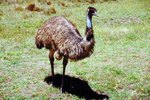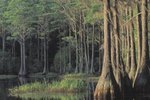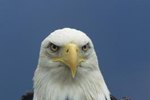
Red-bellied woodpeckers (Melanerpes carolinus), visually speaking, are extremely conspicuous birds, often sporting bright red heads. Although their plumage is memorable, their high-pitched vocalizations are pretty hard to miss, too. Red-bellied woodpeckers are prevalent in the United States, specifically in its eastern regions, from New York to Michigan. They also reside in Canada.
Red-Bellied Woodpecker Introduction
These red-bellied birds fly in wavy movements, as do many of their fellow woodpeckers. They inhabit many woodsy locales, and are particularly fond of those with ample big hardwood trees. Red-bellied woodpeckers also are common fixtures in marshy environments. Their daily menu is made up of components such as arthropods, nuts, sap, seeds and fruit. They also consume lots of insects, namely grasshoppers, flies and ants. Red-bellied woodpeckers occasionally dine on larger creatures, too, whether tiny fish, reptiles or frogs. Some of the species' biggest predators include snakes, hawks and house cats.
Basic Body Feathers
Red-bellied woodpeckers' feathers, for the most part, are light in color. Their stomachs and abdomens both are adorned with lackluster gray and off-white. Their backs, however, are another story. The feathers on red-bellied woodpeckers' backs are made up of striking black and white banding. Red-bellied woodpeckers' rear ends are white. Their feather coloration never changes, no matter what point in the year it is.
Glorious Red
Although red-bellied woodpeckers' feathers are mostly shades of white, gray and black, they also feature bright crimson components. All red-bellied woodpeckers, male and female, boast red on the back parts of their necks. This red is sometimes a little more of a yellowish-orange color in females. The males have extra red coloring on the tops of their heads, too -- caps.
The "Red" of the Belly
The feathers on these independent woodpeckers' stomachs are indeed whitish in color, although they do have subtle hints of red. This is where the "red-bellied" component of the species' common moniker originated. Red-bellied woodpeckers' stomachs often appear somewhat pinkish.
Other Visual Elements
Knowing the plumage is just the first step in identifying red-bellied woodpeckers. These mid-sized birds, at maturity, typically weigh just a little more than 2 ounces. They also usually are around 9.25 inches in length, with wingspans of roughly 16 inches. Red-bellied woodpeckers possess black bills and deep gray feet. The youngsters closely resemble mature specimens, although their heads are never red. Their beaks aren't black, either, but rather brown.
References
- The Cornell Lab of Ornithology All About Birds: Red-bellied Woodpecker
- National Geographic: Red-Bellied Woodpecker
- University of Michigan Animal Diversity Web: Melanerpes Carolinus
- NatureWorks: Red-bellied Woodpecker
- National Audubon Society Birds: Red-bellied Woodpecker
- Tennessee Watchable Wildlife: Red-bellied Woodpecker
Photo Credits
-
Jupiterimages/Photos.com/Getty Images




